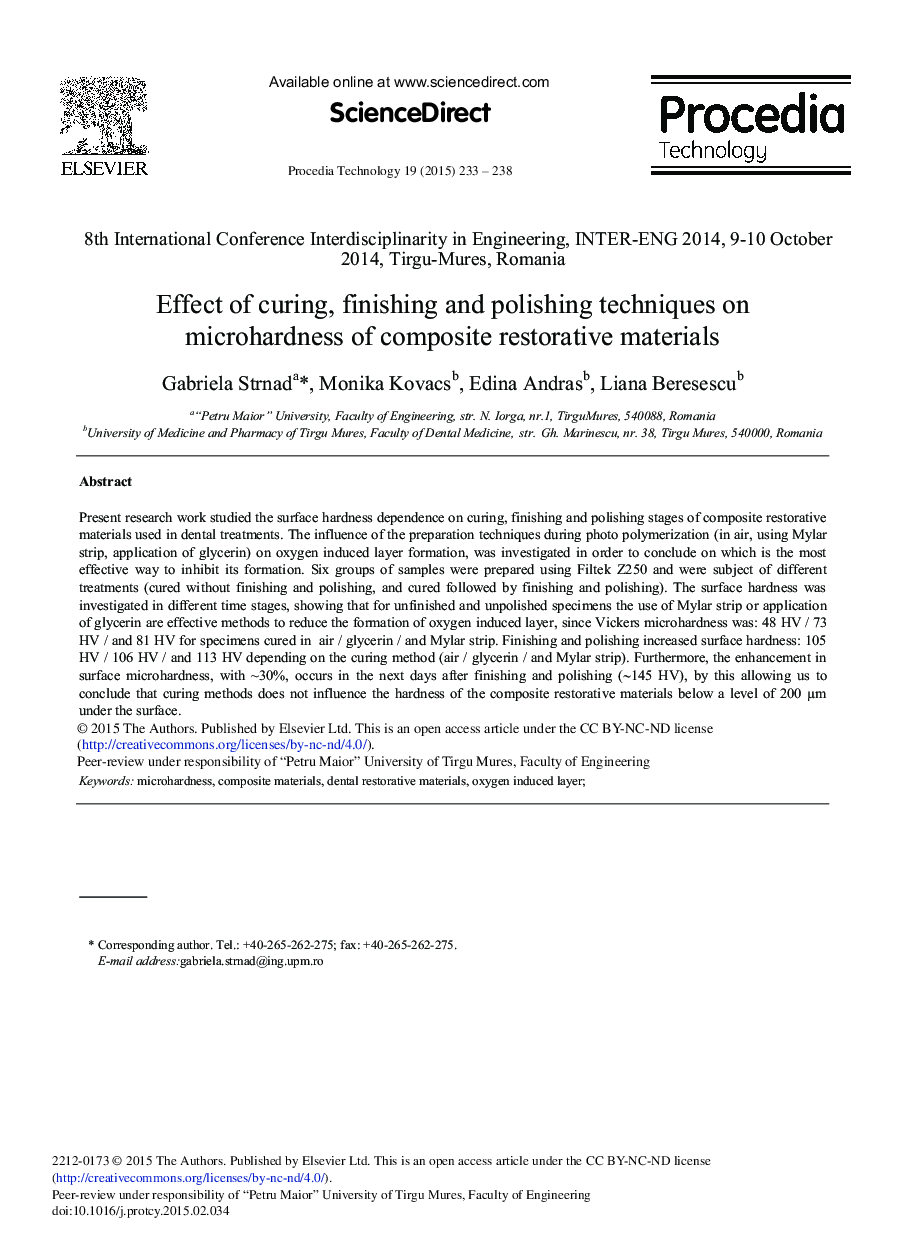| Article ID | Journal | Published Year | Pages | File Type |
|---|---|---|---|---|
| 491526 | Procedia Technology | 2015 | 6 Pages |
Present research work studied the surface hardness dependence on curing, finishing and polishing stages of composite restorative materials used in dental treatments. The influence of the preparation techniques during photo polymerization (in air, using Mylar strip, application of glycerin) on oxygen induced layer formation, was investigated in order to conclude on which is the most effective way to inhibit its formation. Six groups of samples were prepared using Filtek Z250 and were subject of different treatments (cured without finishing and polishing, and cured followed by finishing and polishing). The surface hardness was investigated in different time stages, showing that for unfinished and unpolished specimens the use of Mylar strip or application of glycerin are effective methods to reduce the formation of oxygen induced layer, since Vickers microhardness was: 48 HV / 73 HV / and 81 HV for specimens cured in air / glycerin / and Mylar strip. Finishing and polishing increased surface hardness: 105 HV / 106 HV / and 113 HV depending on the curing method (air / glycerin / and Mylar strip). Furthermore, the enhancement in surface microhardness, with ∼30%, occurs in the next days after finishing and polishing (∼145 HV), by this allowing us to conclude that curing methods does not influence the hardness of the composite restorative materials below a level of 200 μm under the surface.
